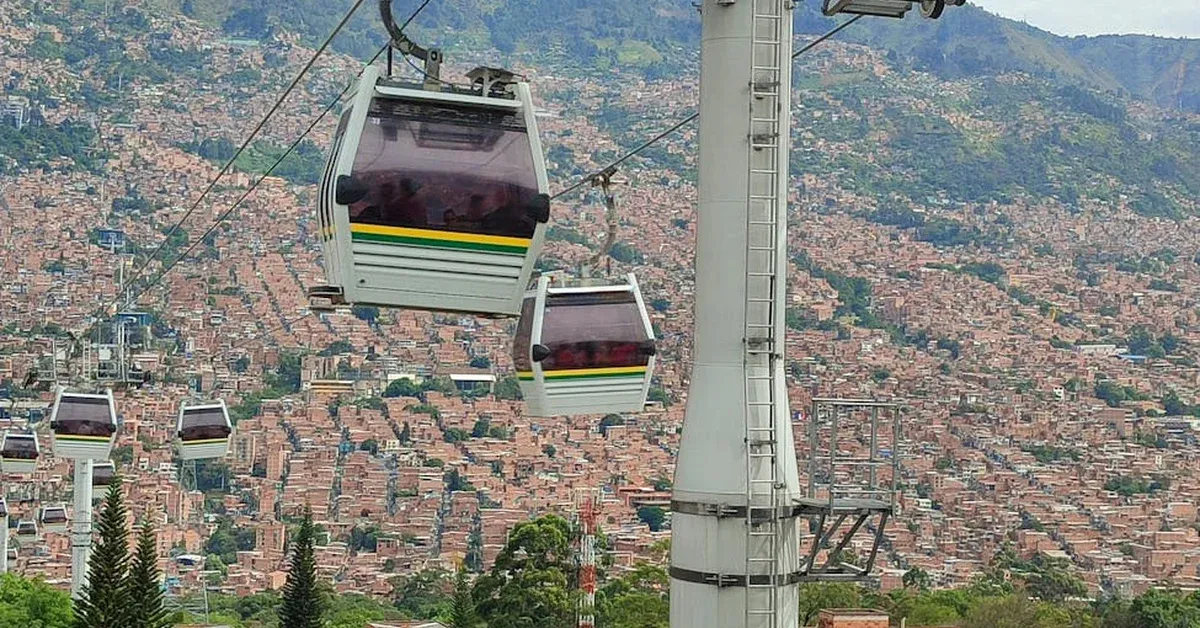
The real story of urban innovation isn’t happening in Silicon Valley. It’s playing out on the steep hills of Medellín, Colombia. This city was once the world’s murder capital. Today, it’s a global example of how smart planning can turn everything around. The transformation didn’t happen by accident. It took courage, clever policy, and some unexpected solutions like cable cars. What Medellín achieved offers a roadmap for any city dealing with crime and inequality.
Cable Cars Changed Everything
In the 1990s, Medellín was synonymous with violence. Drug cartels ruled the streets. The city’s hillside neighborhoods were cut off from opportunity, trapped by geography and neglect. But instead of giving up, city leaders tried something different. They built cable cars.
The Metrocable system connected isolated communities on the hillsides to downtown. This wasn’t just about transportation. It was about hope. Suddenly, people could reach jobs, schools, and services. The cable cars didn’t just cut travel time - they reconnected entire neighborhoods to the city.
The psychological impact was huge too. Riding above the city gave residents a new perspective, literally and figuratively. But Medellín didn’t stop with transit. They built libraries, parks, and cultural centers in the same underserved areas. These weren’t just buildings - they were investments in community pride. The city chose to spend money on people and places instead of just police and prisons.
Transparency Built Trust
What made Medellín’s transformation stick was how they did it. City leaders didn’t just impose change from above. They involved residents in planning and decision-making. This built trust between government and communities that had every reason to be skeptical.
The approach worked. Medellín keeps strengthening accountability and expanding citizen participation in city planning. This open government model helped gain public support for big changes.
The city’s success attracted international attention. Universities drew students from around the world. In 2016, Medellín won the Lee Kuan Yew World City Prize for innovative urban planning. As cities worldwide look for sustainable urban behavior, Medellín proves that social programs and economic growth work together. Unlike places where algorithms reshape democracy, Medellín shows that real change happens when people participate directly in governing their cities.
Success Brings New Problems
Medellín isn’t perfect. The city still struggles with informal employment and income inequality. Success created new challenges too. Rising property values threaten to push out long-time residents. Gentrification risks displacing the very communities that made the transformation possible.
This is the flip side of progress. Even successful change can create winners and losers. Medellín’s leaders know they need to keep adapting to prevent displacement and maintain inclusivity.
For other cities facing similar problems, Medellín offers clear lessons. Smart public transit can connect divided communities. Involving residents in planning builds support for change. Investing in public spaces and services pays off better than punitive approaches alone.
Most importantly, Medellín shows that transformation is an ongoing process. There’s no finish line where a city becomes perfect. It takes constant work to balance growth with equity, progress with inclusion. That commitment to keep improving might be Medellín’s greatest contribution to how we think about building better cities.